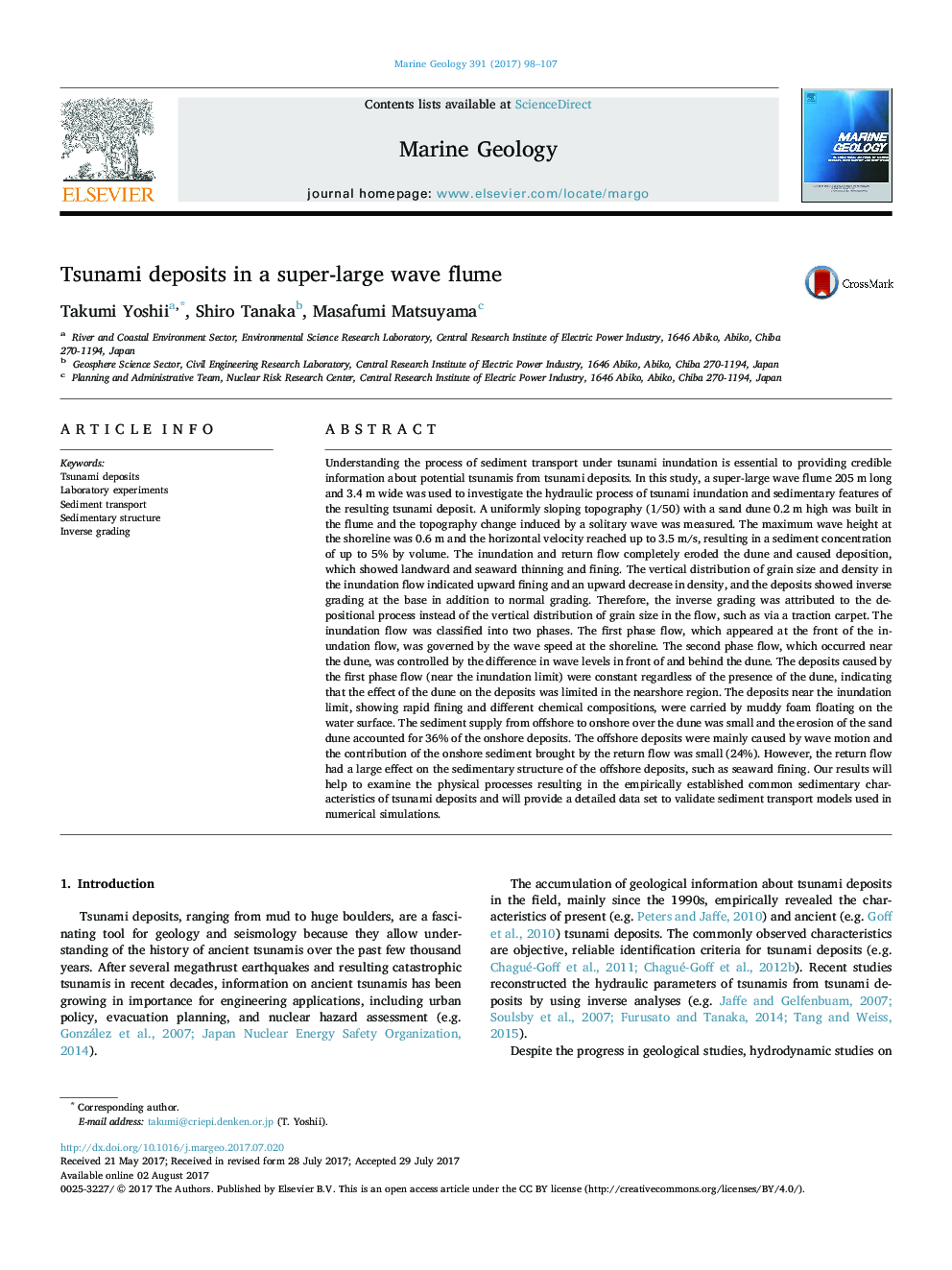| کد مقاله | کد نشریه | سال انتشار | مقاله انگلیسی | نسخه تمام متن |
|---|---|---|---|---|
| 5784502 | 1639061 | 2017 | 10 صفحه PDF | دانلود رایگان |
عنوان انگلیسی مقاله ISI
Tsunami deposits in a super-large wave flume
ترجمه فارسی عنوان
ذخایر سونامی در یک موج فوق العاده بزرگ موج می زند
دانلود مقاله + سفارش ترجمه
دانلود مقاله ISI انگلیسی
رایگان برای ایرانیان
کلمات کلیدی
ذخایر سونامی، آزمایشات آزمایشگاهی، حمل و نقل رسوب، ساختار رسوبی، درجه بندی معکوس،
موضوعات مرتبط
مهندسی و علوم پایه
علوم زمین و سیارات
ژئوشیمی و پترولوژی
چکیده انگلیسی
Understanding the process of sediment transport under tsunami inundation is essential to providing credible information about potential tsunamis from tsunami deposits. In this study, a super-large wave flume 205Â m long and 3.4Â m wide was used to investigate the hydraulic process of tsunami inundation and sedimentary features of the resulting tsunami deposit. A uniformly sloping topography (1/50) with a sand dune 0.2Â m high was built in the flume and the topography change induced by a solitary wave was measured. The maximum wave height at the shoreline was 0.6Â m and the horizontal velocity reached up to 3.5Â m/s, resulting in a sediment concentration of up to 5% by volume. The inundation and return flow completely eroded the dune and caused deposition, which showed landward and seaward thinning and fining. The vertical distribution of grain size and density in the inundation flow indicated upward fining and an upward decrease in density, and the deposits showed inverse grading at the base in addition to normal grading. Therefore, the inverse grading was attributed to the depositional process instead of the vertical distribution of grain size in the flow, such as via a traction carpet. The inundation flow was classified into two phases. The first phase flow, which appeared at the front of the inundation flow, was governed by the wave speed at the shoreline. The second phase flow, which occurred near the dune, was controlled by the difference in wave levels in front of and behind the dune. The deposits caused by the first phase flow (near the inundation limit) were constant regardless of the presence of the dune, indicating that the effect of the dune on the deposits was limited in the nearshore region. The deposits near the inundation limit, showing rapid fining and different chemical compositions, were carried by muddy foam floating on the water surface. The sediment supply from offshore to onshore over the dune was small and the erosion of the sand dune accounted for 36% of the onshore deposits. The offshore deposits were mainly caused by wave motion and the contribution of the onshore sediment brought by the return flow was small (24%). However, the return flow had a large effect on the sedimentary structure of the offshore deposits, such as seaward fining. Our results will help to examine the physical processes resulting in the empirically established common sedimentary characteristics of tsunami deposits and will provide a detailed data set to validate sediment transport models used in numerical simulations.
ناشر
Database: Elsevier - ScienceDirect (ساینس دایرکت)
Journal: Marine Geology - Volume 391, 1 September 2017, Pages 98-107
Journal: Marine Geology - Volume 391, 1 September 2017, Pages 98-107
نویسندگان
Takumi Yoshii, Shiro Tanaka, Masafumi Matsuyama,
